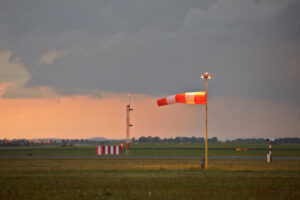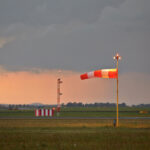Winds Aloft in Forecasts Help with Flight Safety
When pilots do their preflight planning, weather is one of the first things they look at. Precipitation, cloud heights, wind direction, speed, etc. are all part of getting ready for a flight. Pilots check the weather for both the departure and arrival airport, but what about the weather in between? The winds and temperatures at altitude between airports are important when planning fuel burns, so a solid understanding of winds aloft in aviation is essential.
Why Is This Data So Important
Knowing the winds and temperature aloft for your flight could mean the difference between landing safely at your destination or having an emergency that may not end well. A stronger than anticipated headwind may force you to land without the FAA mandated fuel reserve (or you might even need to search for a place to land before you run out of fuel), while lower than forecast temperatures at your altitude may introduce dangerous icing conditions that you and/or your airplane can’t handle.
What Is Included in the Forecast?
Altitudes:
- The altitude information is given in height above sea level.
- Usually, the range is from a few thousand feet above sea level to over 40,000 feet.
Winds Aloft:
- Wind information is given for various altitudes.
- Wind direction is given in degrees from True North.
- Wind speed is given in knots.
Temperature Aloft:
- The forecast provides temperatures at various altitudes.
- Temperature is measured in degrees Celsius.
Where Does the Data Come From?
Computer models generate the forecast data for the winds and temperatures aloft by using data from various sources, including:
- Observations from Satellites
- Weather balloons
- Observations from the surface
- NWP models (Numerical weather Prediction)
- Radiosonde observations
Remember
Regardless of the method used to compile the information, winds aloft data are used for one important purpose: to keep pilots and passengers safe and prepared for the weather they may encounter on a particular flight. This report should be part of every preflight weather briefing and pilots should familiarize themselves with the winds aloft format and sequence to continue to make smart and safe decisions.
RELATED READING
RELATED CTS TRAINING









